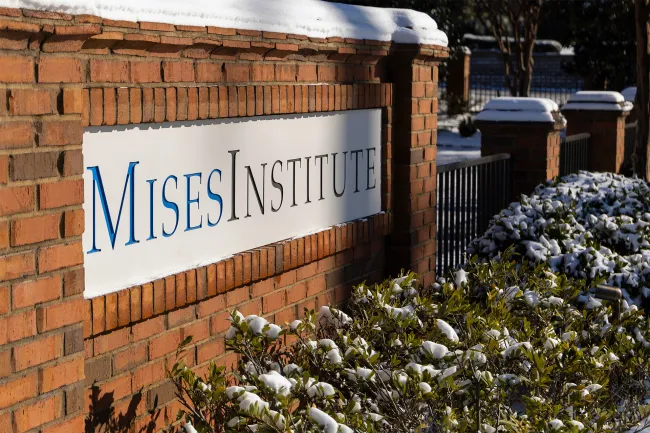In recent weeks, the Trump administration has deployed—or threatened to deploy—National Guard troops in at least five American cities, including Chicago, Portland, Los Angeles, and New Orleans. Many of Trump’s supporters have cheered this, claiming that it is the responsibility of the president to send federal troops wherever he determines they are needed.
In some cases, deployments have occurred over the objections of the governments in the states where the troops are deployed. This has led to a complex legal situation, with the governments of California and Oregon suing the administration over the deployments. Judges, pundits, and lawyers will surely continue to argue for some time over the current legality of these deployments—as interpreted by federal judges—in federal court.
The fact that this is a matter of debate at all, however, illustrates how far the United States has come from the American Revolutionaries’ original vision of a federal republic with a greatly limited and decentralized military force. In the founding era, Americans feared the existence of a standing army that could be deployed at the will of federal officials. Moreover, Americans demanded that the states maintain their own, independent militias that could not be subjected to federal control without the cooperation of state officials.
That attitude is now long gone.
Instead, we find that both Left and Right in the United States now generally support more federal control, depending on which political party is in power, or which group is on the receiving end of new federal prerogatives. At the moment, it’s the Right that is in power, and so it is now conservatives who are clamoring for more federal power to deploy troops, expand federal law enforcement, and further bury the last few vestiges of the sovereignty once enjoyed by state governments.
For those who are actually concerned about the further concentration of political power, and who support real limits on the federal government, the president’s habit of sending federal troops to American cities is serious problem.
The Dangers of a Standing Army, and the Creation of a Decentralized Military in America
In the very early years of the United States, American political sentiment was heavily against any standing army under federal control. As summarized by Griffin Bovée at the Journal of the American Revolution:
Few ideas were more widely accepted in early America than that of the danger of peacetime standing armies. This anti-standing army sentiment motivated colonial opposition to post-French and Indian War British policies, intensified after the Boston Massacre, influenced the writings of most founding fathers, and remained politically relevant well after the Revolutionary War ended. This sentiment remained largely unchallenged until the introduction of the U.S. Constitution to the public for ratification. The Constitution’s “army clause,” which allowed the U.S. Congress to raise and support armies with biennial funds, sparked a nation-wide debate that pitted tradition against innovation, precedent against necessity, and federalism against nationalism.
The new federal military powers outlined in the proposed new constitution of 1787 sparked much resistance from the so-called anti-Federalists. Chief among them was Patrick Henry who initially opposed ratification of the new constitution on the grounds that the balance of military power under the new constitution favored the federal government. Henry wanted to ensure that an independent system of state militias would remain in place as a safeguard against centralized federal military power. In a 1788 speech, Henry railed against both the raising of a permanent army, and federal control over state troops: “Have we the means of resisting disciplined armies, when our only defence, the militia, is put into the hands of Congress?”
[Read More: “The Ratification Debate: A Standing Army vs. the Militias“ by Murray N. Rothbard]
Back then, it was assumed that the Congress would be the dominant power in the federal government, but if Henry were around today, seeing how the presidency now effectively controls the federal government, he would ask how Americans could resist federal power if the states’ militias were “put into the hands of the President?”
The idea here is that the states must not allow state troops—nowadays called the “National Guard”—to be controlled by the federal government.
For most of the nineteenth century—until the Civil War—the federal standing army was tiny. In effect, the federal government had access to very few troops for federal deployments of any kind. Federal control of state militias was still subject to veto by the state governments, and state governments were also known to use this veto. For example, the state governments refused to comply with federal attempts to take control of state troops in wartime in Connecticut in 1812, and Kentucky in 1861. In peacetime, state governments guarded their prerogatives over the militia even more jealously.
Turning State Militias Into a Federalized Military Force
By the late nineteenth century, however, state troops increasingly came under the control of the federal government, and the beginning of the end came with the Dick Act of 1903. As noted by David Yassky:
Statutes subsequent to the Dick Act have placed the National Guard under ever-greater federal control. Currently, anyone enlisting in a National Guard unit is automatically also enlisted into a “reserve” unit of the U.S. Army (or Air Force), the federal government may use National Guard units for a variety of purposes, and the federal government appoints the commanding officers for these units.1
The Dick Act introduced the use of the phrase “National Guard” in federal statutes. This new legislation also paved the way for the use of National Guard units to be used outside the territory of the United States, with a 1906 amendment specifically creating a provision for the use of militia units “either within or without the territory of the United States.”
This provision was later contested on constitutional grounds, but the Congress responded with the National Defense Act of 1916 which made it even easier for the president to call up state troops for federal purposes.
Over time, the line between state militias and federal troops became increasingly blurred, and today, state National Guard units today do not function independently of the United States government in any meaningful way.
Notably, the Dick Act also played a big part in overturning the idea that the general public constituted the informal militia of the United States. In the nineteenth century, there was a symbiotic relationship between the state militias and private gun ownership. This was due largely to the founding-era conception of the militia. Yassky adds:
[I]n the Founders’ conceptual framework the militia consisted of the mass of ordinary citizens, trained to arms and available to serve at the call of the state. As George Mason put it: “Who are the militia? They consist now of the whole people, except [for] a few public officers. ... When the Second Congress sought to exercise its constitutional authority to “provide for organizing, arming and disciplining the Militia,” it directed “each and every free able-bodied white male citizen of the respective states [except for persons exempted under state law and certain other exempted classes] ... who is ... of the age of eighteen years, and under the age of forty-five years” to enroll in the militia of their states. Or as Patrick Henry declared at the Virginia ratifying convention: “The great object is, that every man be armed.”2
With the invention of the federally controlled “National Guard,” however, the legal concept of an “unorganized militia” was effectively abolished, and with it the perceived value of armed citizens. Even worse is the gradual subversion of the independence of the state militias.
Nonetheless, many modern-day conservative Trump supporters have apparently discovered their love of a federalized militia and the idea that the central government can deploy it at the whims of the central government. Trump has even proposed a permanent nationwide “reaction force” of National Guard troops for deployment to American cities at the president’s discretion. This would be the realization of a standing army specifically designed for use against Americans.
This was exactly what Henry, Mason, and the anti-Federalists feared and argued against. But, for Trump, it seems no amount of federal power is too much so long as it’s in the service of “owning the libs” and targeting political opponents. One would think that those who purport to oppose federal power and support individual liberty would balk at the idea of handing over even more coercive power to the federal government. Alas, if Trump supporters are any indication, this is apparently not the case.
The United States is already so far down the road of centralization and militarization that the average American of the founding era would find this country utterly unrecognizable. Americans of that era were far more realistic and less naïve about how abuses of power are carried out. The preservation of freedom often comes down to balancing one coercive power against another. A country where the central government holds almost all the military power, however, is a country where the central government is effectively free to do whatever it wants to its citizens in a time of emergency, either imagined or real. Those early Americans who sought to prevent the centralization of military power were right. But their words of warning are long forgotten.
- 1
See: David Yassky, “The Second Amendment: Structure, History, and Constitutional Change,” 99 Mich. L. Rev. 588 (2000).
- 2
Ibid.


